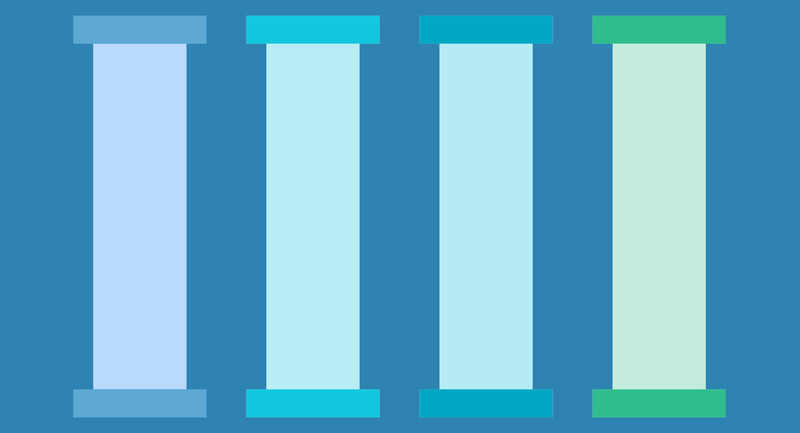For decades, researchers and practitioners alike have lamented that U.S. teachers too often work in isolation, that they do not have the time they crave for connecting with colleagues, and that they spend much less time collaborating than teachers in the highest-performing countries (Jacobson, 2018). Yet slowly, U.S. schools are catching up, reorganizing their master schedules to ensure at least some protected time each week for teaching teams to engage in dialogue (Jarmolowski, 2017). This is good news because research confirms that in schools where educators collaborate, outcomes can be greater for students (Papay & Kraft, 2017).
But the quality of collaboration also matters. When we're not prepared to have deep discussions, it is entirely possible to engage in dialogue about student work and data, collaboratively plan lessons, or discuss individual students, and yet still not add value to the quality of each other's work.
Whether due to longstanding norms of egalitarianism in our profession or local cultural norms to "be nice," educators' conversations in schools don't always have the heat they need to go deeper than surface level. It's too easy to offer only platitudes after a colleague shares a favorite assignment they designed, to identify only what went well after a peer observation, or to simply agree with the team during collaborative lesson planning. An old adage suggests that "two heads are better than one." But that rings most true when we are willing to push each other's thinking.
Educators' willingness to risk taking professional conversations to a deeper level depends upon a few factors. They have to believe all participants are on the same page about the purpose of the conversation, specifically about the expectations regarding feedback. In deep discussions, things tend to get messy before they become clear, so educators must know that there will be sufficient time for a real conversation. In addition, deep discussions require participants to have confidence in the process. We are more willing to invest emotionally and intellectually if we see that there is scaffolding to keep the conversation focused and impactful. Discussion protocols can help educators trust that these factors will be in place.
Protocols, defined simply, are sets of procedures. We use them in education regularly to guide routine tasks, such as when a new student is admitted to a school, a behavior incident is reported, or a field trip is arranged. Curiously, we use them with less consistency to guide routine conversations. We don't need to invent new processes each time we critically review lesson plans, inspect curriculum materials for bias, or examine student work. On the contrary, the repetition of a procedure provides the opportunity to refine the procedure and perform it more skillfully. In fact, over time, collaborating to curate a repertoire of protocols that support us to make high-quality decisions within our complex work helps us build professional capital.
Increasingly, teacher leaders and administrators are working together to create, compile, and provide easy access to protocols they are committed to using to improve the quality of collaborative conversations. One way to get started is to browse models of open-access, educator-created protocols that can be adopted or adapted, such as those shared by School Reform Initiative and the Harvard Graduate School of Education's Teaching and Learning Lab.
Simply seeing a protocol-driven discussion on a team-meeting agenda can signal to participants that there will be agreements in place to help the discussion address its purpose without becoming derailed, losing focus, or spilling over beyond the time agreed upon. It should help participants feel confident that the vulnerability they will be asked to invest in the conversation will be worthwhile and have the intended impact.
Discussion protocols can feel awkward, limiting, or off-putting at first. It takes practice to become accustomed to them and to maximize this new structure for professional knowledge-building.
Protocols generally consist of a series of timed steps that confine participants' talk to certain types at different times. For example, depending upon the protocol, there may be time allotted for description (e.g., of a dilemma or sample of student work), clarifying questions, probing questions, or idea generation. This can lead some educators to feel frustrated that they can't just say what they want, when they want. Here it's helpful to remember that "this is not about you." The discussion should focus on the problem at hand: The protocol is designed to prevent the conversation from being hijacked by those who are used to taking all the airtime and turning the conversation to their own needs.
It is common, too, to see participants express anxiety about the fact that protocols can seem to focus a large amount of time and attention on one student or piece of work. To these educators, the solution doesn't seem scalable. In reality, though, protocols give us the luxury to move beyond the usual hunches and generalizations we make to try to "cover" all students and to focus instead on case-specific evidence, as seen in new ways through multiple perspectives. As we slow down our usual rush to judgment, we spark new curiosity and insights about the relationship between our choices as educators and student learning. This can become visible during the debriefing at the conclusion of the protocol, as we see, for example, how one student's response to a writing prompt can help us consider ways to draft strong writing prompts that serve all students better.
Finally, if the protocol does not seem to be getting at the real issue, the team might be using the wrong protocol. Some protocols are designed to help expand participants' thinking to include multiple perspectives, while others are designed to help a group narrow down to a decision. Some protocols focus our attention on a single student, piece of work, or problem, while others help us to see patterns across cohorts, curricula, or time. Through practice, educators can get better at identifying what kind of issue or question they want to discuss with colleagues and selecting a protocol with features that can address it.
Since the turn of the millennium, the teaching profession has shown strong signs of shifting from being a collection of individuals working in adjacent classrooms and schools to becoming a collaborative workforce that is networked for greater collective impact. The more we connect authentically around our professional practices, pool our expertise to create the tools we need to do our work well, and push ourselves to have deep discussions, the closer we become to creating a profession that can serve the needs of each student in our care.
References
•
Jacobson, L. (2018, March 6). Survey: Teachers want more time for collaboration. Education Dive.
•
Jarmolowski, H. (2017, November). Teacher planning and collaboration time [Blog post]. National Council on Teacher Quality.
•
Papay, J., & Kraft, M. (2017). "Developing workplaces where teachers stay, improve, and succeed" in Teaching in context: The social side of education reform. Cambridge, MA: Harvard Education Press.








